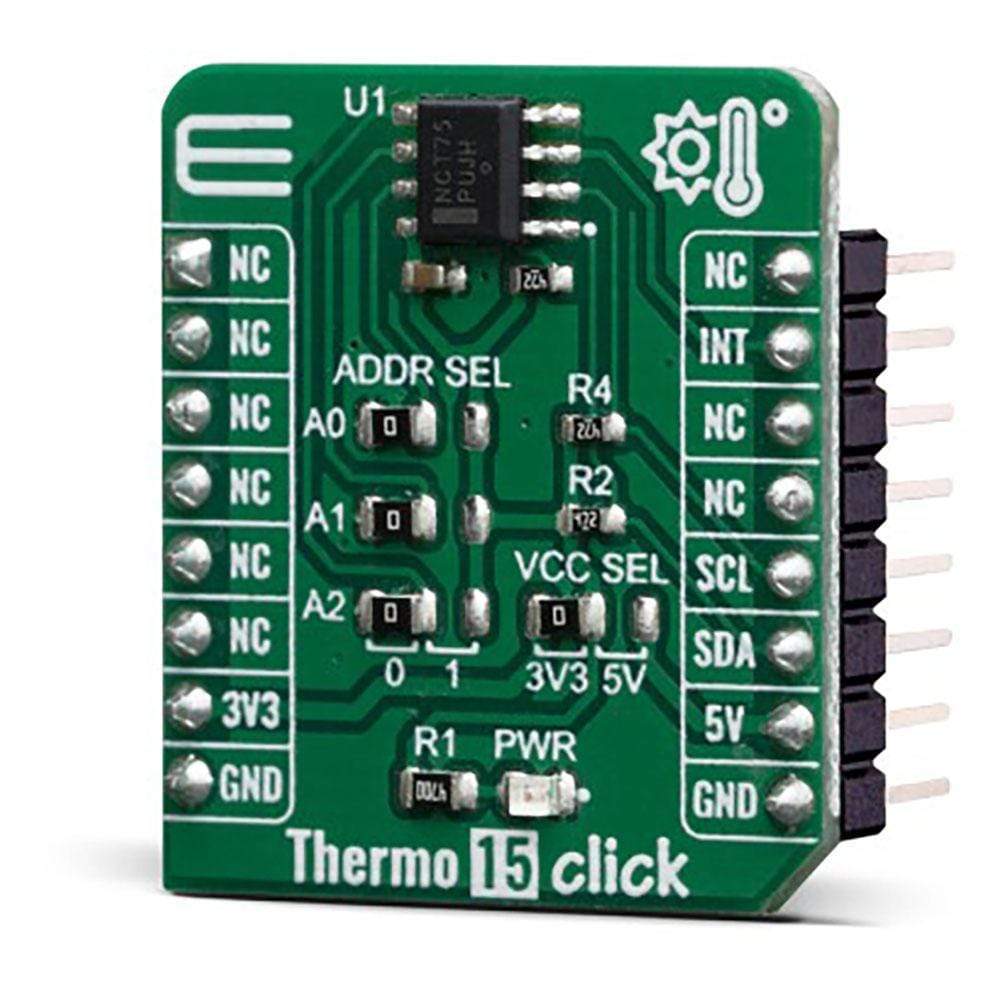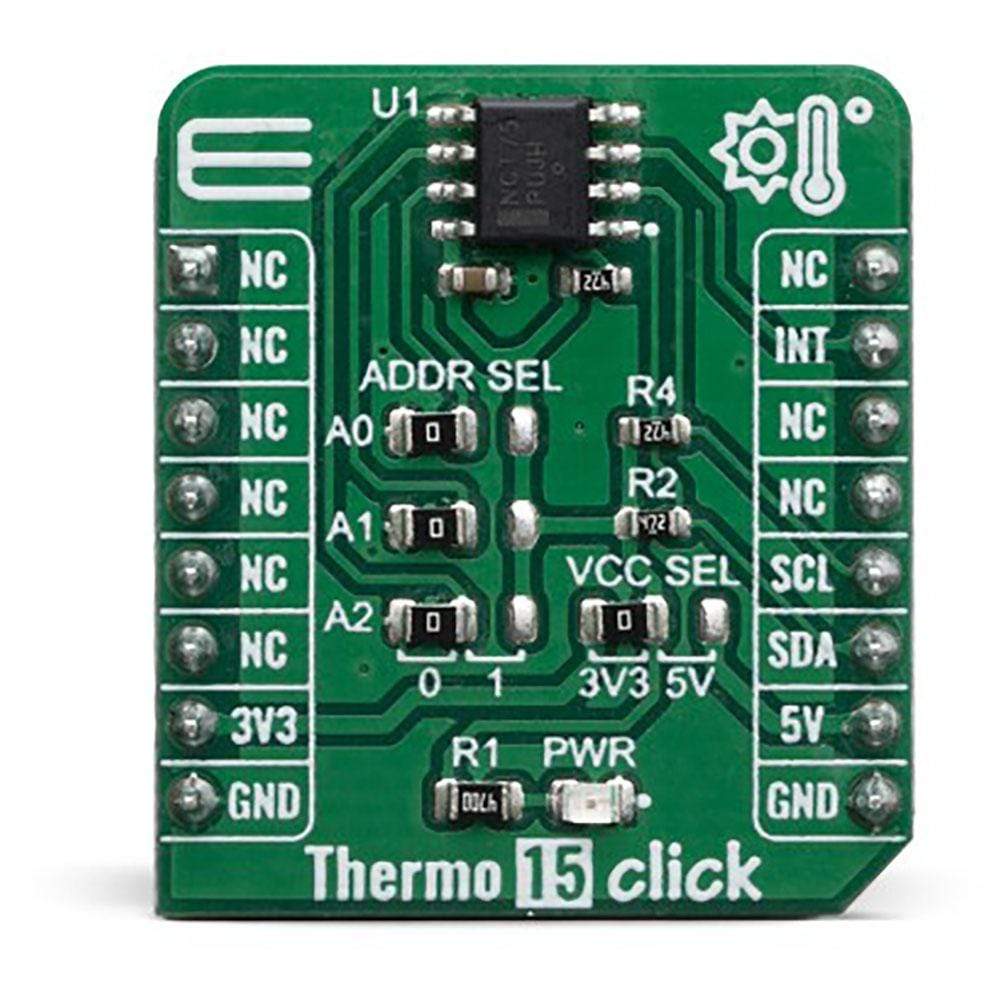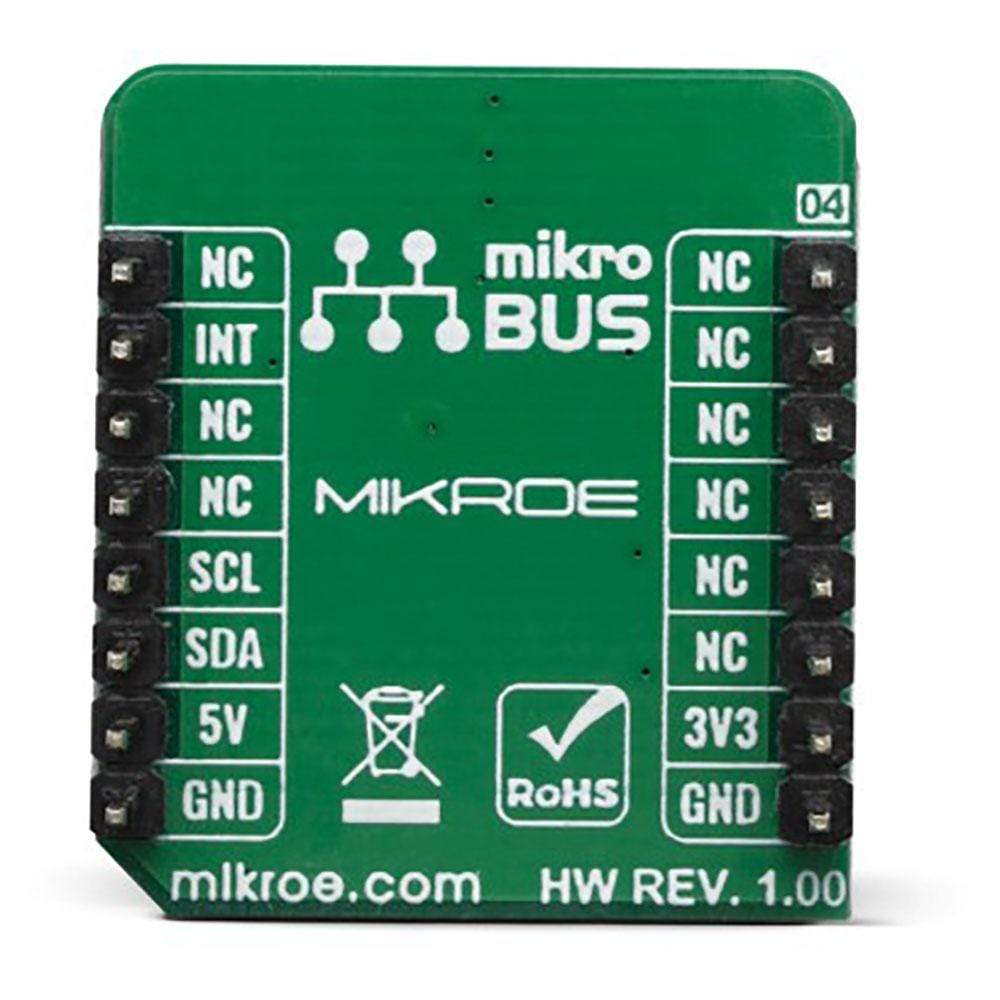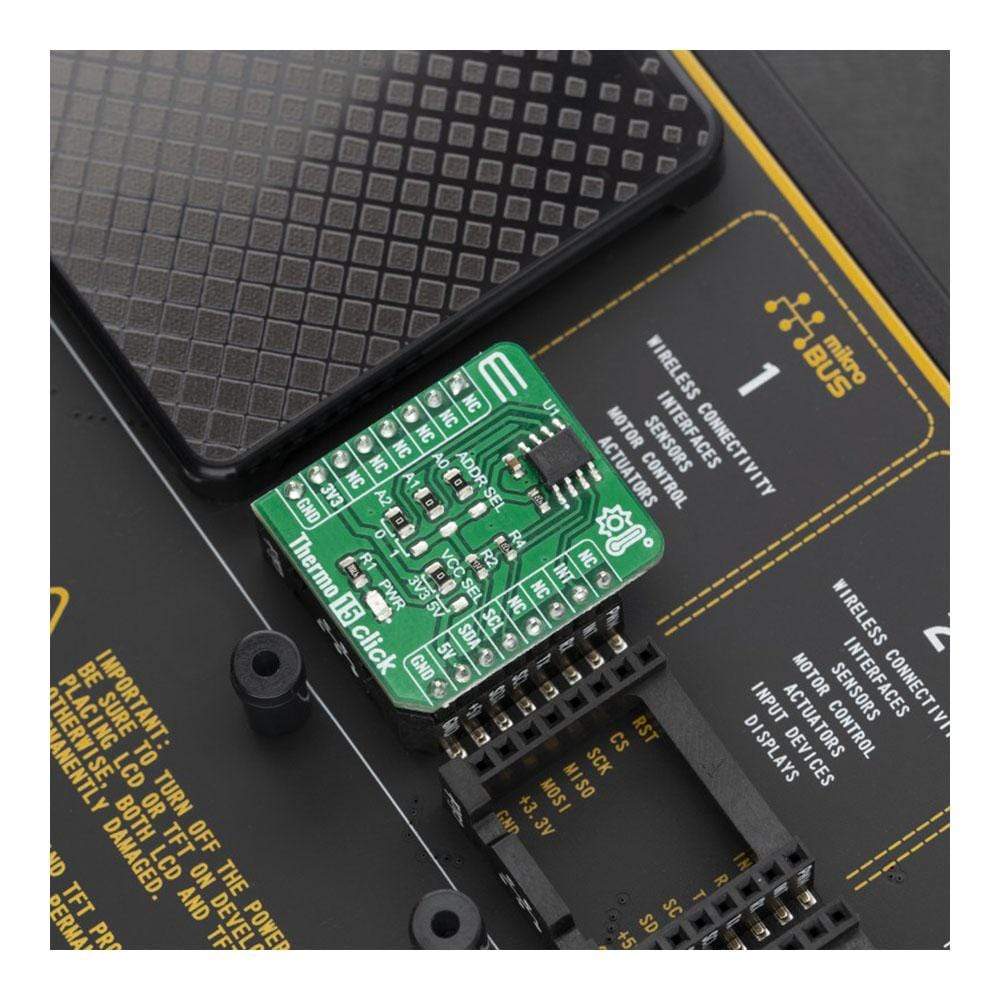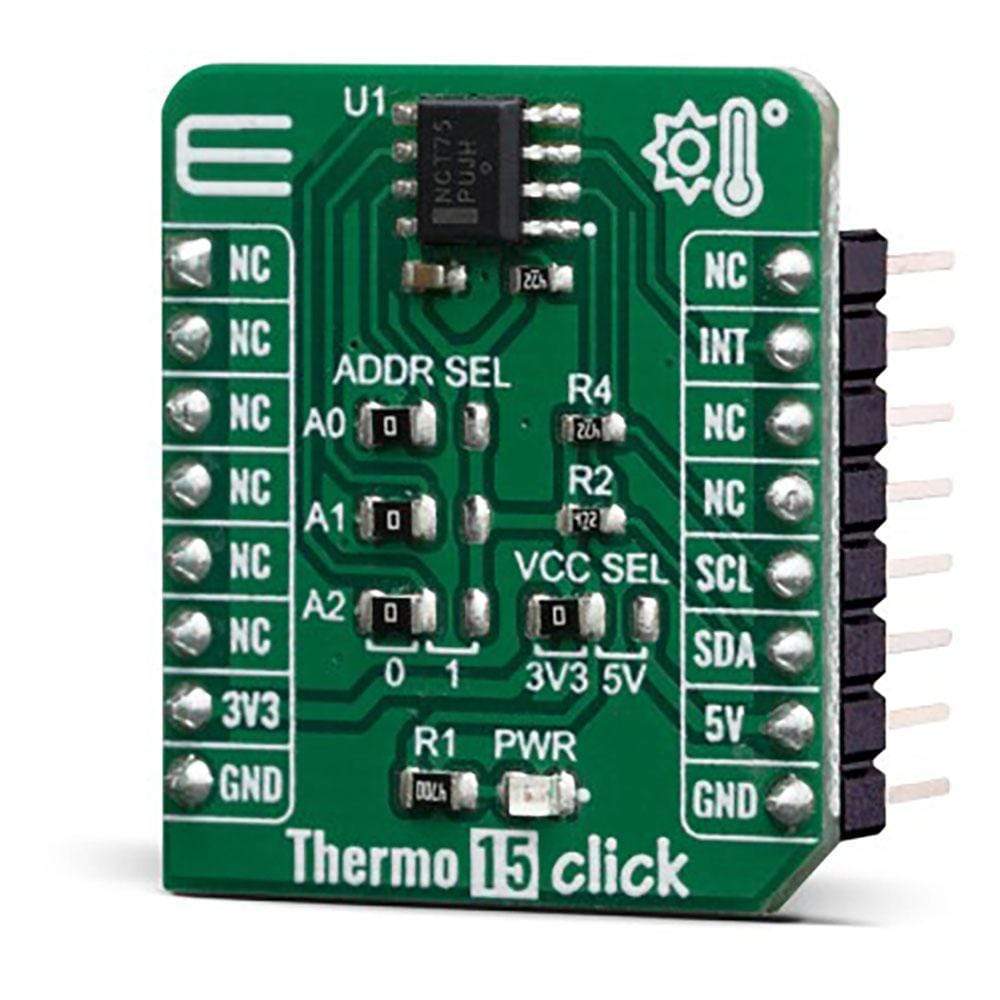
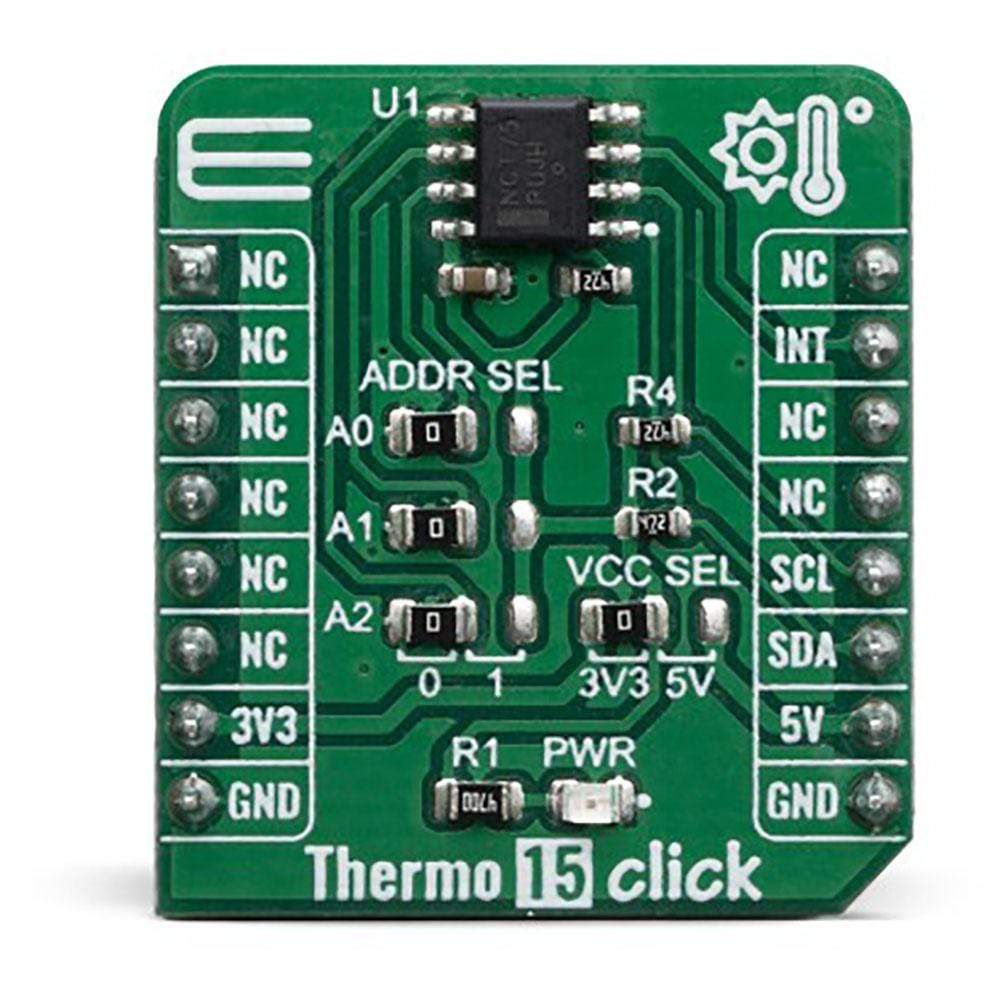
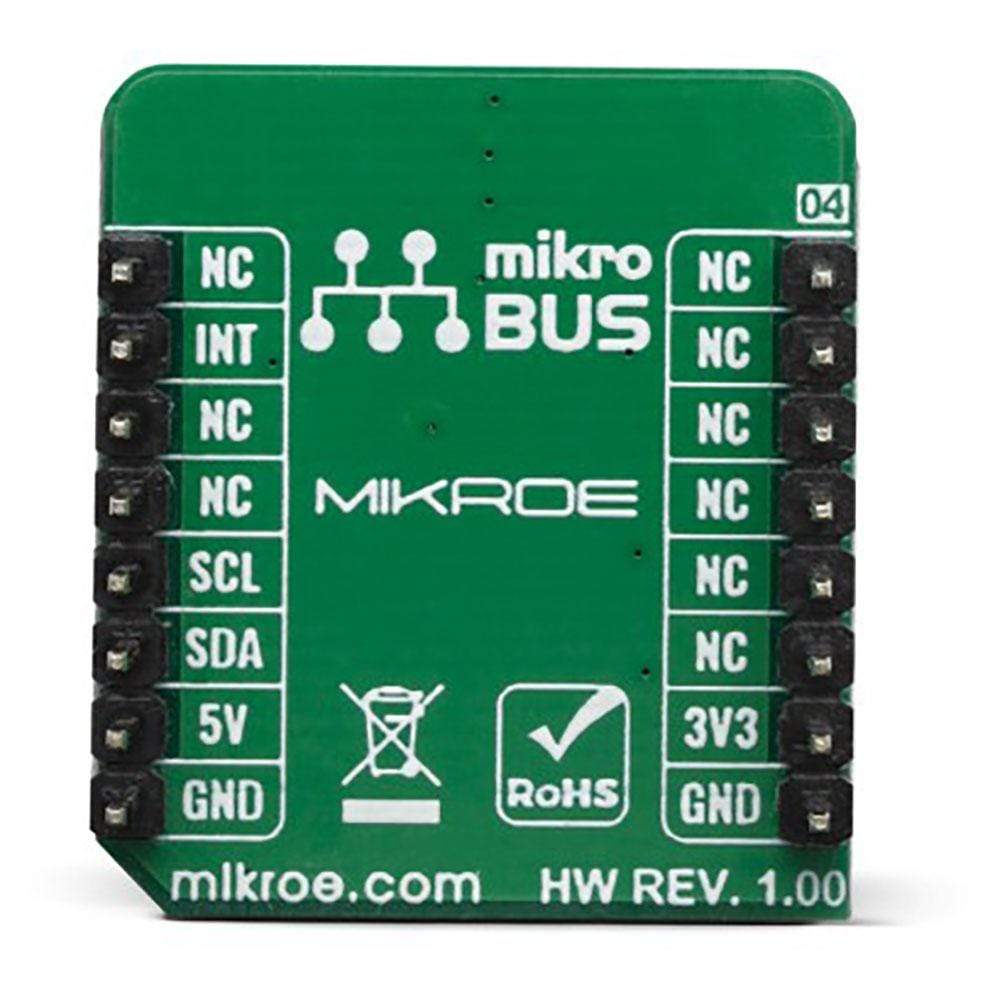
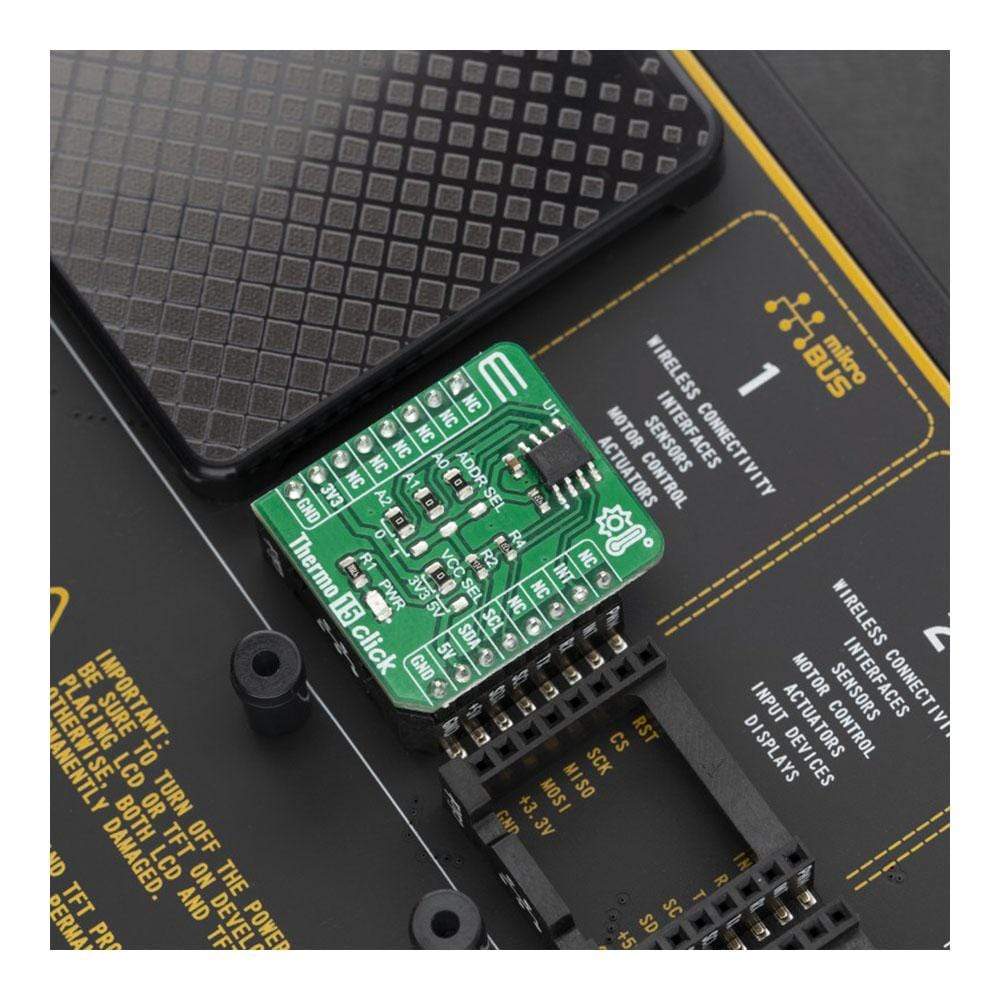
Overview
The Thermo 15 Click Board™ is equipped with the sensor IC, which can digitize temperature measurements between -55°C and +125°C so that the temperature measurement data can be processed by the host MCU. The Thermo 15 Click Board™ provides an accuracy of ±1°C in the range from 0°C to 70°C. The sensor used on this Click Board™ has a great combination of features that make it a perfect choice for any temperature measurement application: low-temperature drift, low power consumption, programmable alert engine, compact sensor size, critical temperature warnings, and more. The sensor itself requires almost no external components, which simplifies the design, reducing the cost and cutting the time to market.
The Thermo 15 Click Board™ is supported by a mikroSDK compliant library, which includes functions that simplify software development. This Click Board™ comes as a fully tested product, ready to be used on a system equipped with the mikroBUS™ socket.
Downloads
Das Thermo 15 Click Board™ ist mit dem Sensor-IC ausgestattet, der Temperaturmessungen zwischen -55 °C und +125 °C digitalisieren kann, sodass die Temperaturmessdaten von der Host-MCU verarbeitet werden können. Das Thermo 15 Click Board™ bietet eine Genauigkeit von ±1 °C im Bereich von 0 °C bis 70 °C. Der auf diesem Click Board™ verwendete Sensor verfügt über eine großartige Kombination von Funktionen, die ihn zur perfekten Wahl für jede Temperaturmessanwendung machen: geringer Temperaturdrift, geringer Stromverbrauch, programmierbare Warnfunktion, kompakte Sensorgröße, Warnungen bei kritischen Temperaturen und mehr. Der Sensor selbst benötigt fast keine externen Komponenten, was das Design vereinfacht, die Kosten senkt und die Markteinführungszeit verkürzt.
Das Thermo 15 Click Board™ wird von einer mikroSDK-kompatiblen Bibliothek unterstützt, die Funktionen enthält, die die Softwareentwicklung vereinfachen. Dieses Click Board™ wird als vollständig getestetes Produkt geliefert und ist bereit für den Einsatz auf einem System, das mit der mikroBUS™-Buchse ausgestattet ist.
| General Information | |
|---|---|
Part Number (SKU) |
MIKROE-3658
|
Manufacturer |
|
| Physical and Mechanical | |
Weight |
0.017 kg
|
| Other | |
Country of Origin |
|
HS Code Customs Tariff code
|
|
EAN |
8606018716418
|
Warranty |
|
Frequently Asked Questions
Have a Question?
Be the first to ask a question about this.

